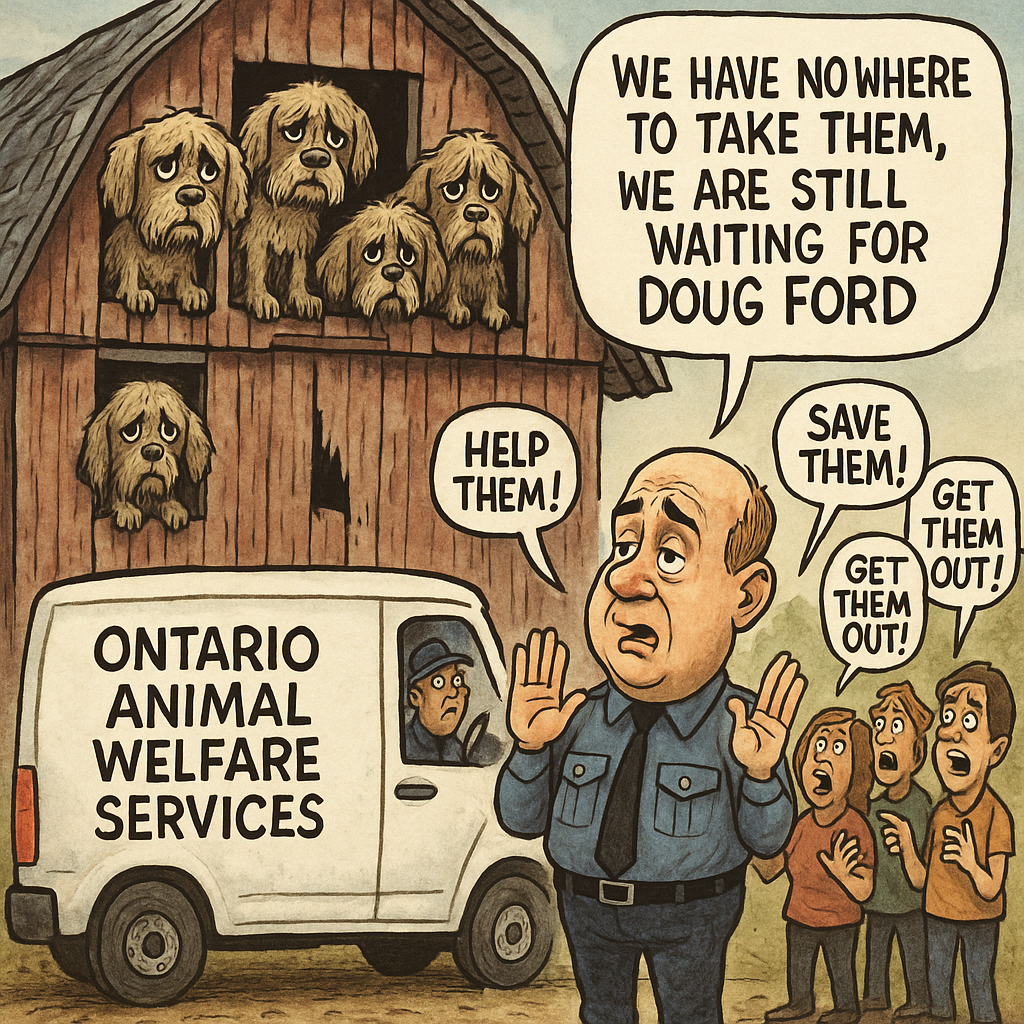In 2019, the Ontario government knew that the responsibility of overseeing animal welfare would be changing hands from the Ontario Society for the Prevention of Cruelty to Animals (OSPCA) to the provincial government.
The PAWS Act was written with the majority of it being taken from the OSPCA Act. Animal Welfare Services (AWS) would come under the Ministry of the Solicitor General and would be the enforcement arm.
Doug Ford made a commitment to the taxpayers that he would have replicated the infrastructure that the OSPCA had to provide the needed shelter and care for seized animals.
Unfortunately there are times when animals must be removed from existing premises, farms etc because they are not being cared for properly. Where are those animals taken?
The OSPCA had physical premises to house seized animals. The government promised that they would have these types of premises.
The PAWS Act is now into its SIXTH year and there is no sign of such premises.
Humane Initiative sat down with AWS Chief Melanie Milczynski in October 2024 to discuss our animal welfare concerns. One of the many issues discussed was the enforcement model being used by AWS. Their approach was more of a “re-education” approach as opposed actually removing the animal from a dangerous, neglectful, abusive situation.
The “re-education” approach was AWS trying to modify the owners behaviour so that the animals would be cared for in a more appropriate manner. Sounds great, but sometimes that behaviour is not going to change and for the animals safety and well being they must be removed.
BUT WHERE DO THOSE SEIZED ANIMALS GET TAKEN?
During the OSPCA’s reign, those animals would be taken to their in shelter hospitals or to a local vet and then kept at their facilities. No such thing exists under the PAWS Act.
We asked Chief Milczynski about this. She said they had a wonderful and widespread network of shelters and rescue partners that could be utilized.
Again, this sounds great but as many of us are aware for several years now (since COVID) we have been in an animal welfare crisis where shelters and rescues are at capacity – closed to intake. Now there may be some shelters that may have a set number of kennels set aside for AWS use but what happens when more than a few animals are needing placement….where do they go?
For 6 years now….the provincial government has not had an answer to this question.
A couple of years ago in 2021, AWS removed over 200 sled dogs from a sledding business in Central Ontario. The dogs were put into paid boarding facilities. The owners would be held responsible for the cost of boarding, vet care along with any charges laid under the PAWS Act. The costs racked up have been over $2.6 million.
AND something for all of us to remember….when those huge bills go unpaid…who pays those boarding kennel businesses, those vet clinics – WE DO….the TAXPAYER!
Since then, there has been a lot of legal back and forth between the owners of the sledding business and the province. Over 30 dogs have died since the seizure, while in the care of these paid boarding kennels. It was also uncovered that some of these boarding facilities failed to meet the minimum standards of care set forth in the animal welfare legislation.
Doug Ford is trying everything possible not to do what is required to provide the needed enforcement, protections, shelter and care for these animals.
- Will not put in the place the required number of field inspectors to properly cover this very large province. Ontario still is woefully under resourced, having the same as Manitoba which is 1/10th the size of Ontario
- Doug Ford refuses to require dog breeders to be licensed – thus making invisible commercial breeders visible to oversight and taxation of income
- Refusing to writing humane Standards of Care that require more than food/water/shelter
- Not putting the needed infrastructure in place
With businesses closing or moving there would be undoubtedly existing buildings, warehouses, factories that (depending on zoning) could easily be modified to provide what is needed to fulfil their promise to the Ontario taxpayer. This would be the most cost effective approach.

